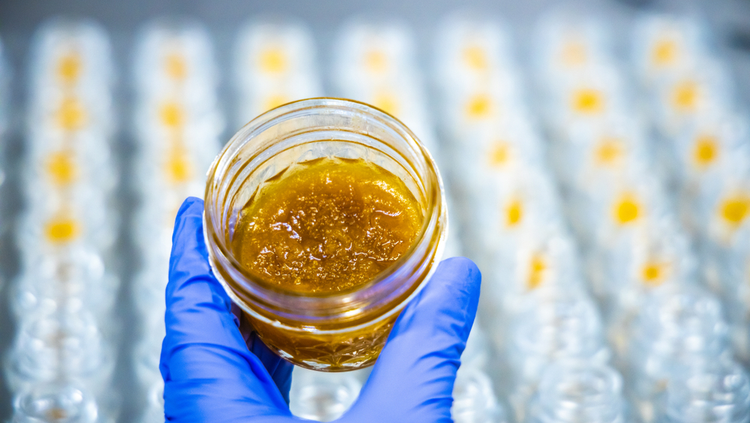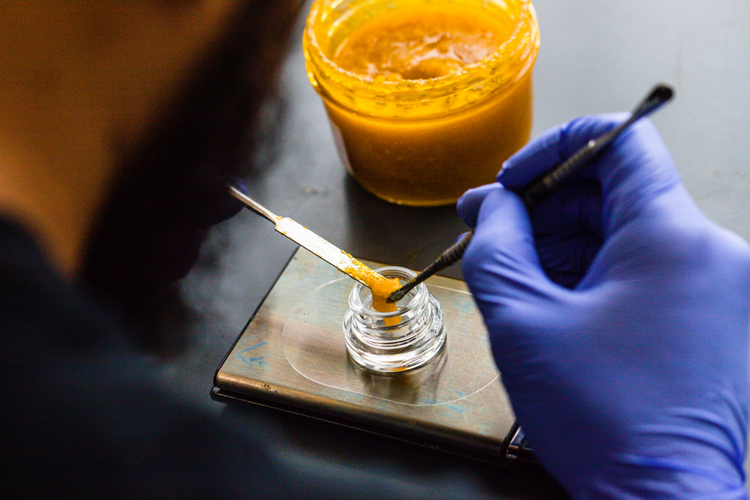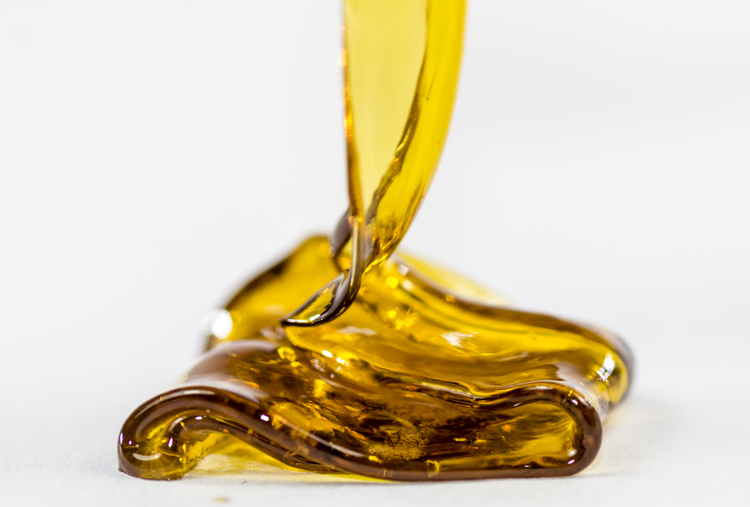Live resin extract is the future of cannabis
We are now experiencing a hemp revolution. One of the fastest growing areas of the hemp industry is concentrated extracts such as waxes and CBD crystals.
The latest report published by ArcView Research and BDSAnalytics suggests that the concentrate market alone will reach nearly $8.5 billion by 2022. In 2018, concentrates accounted for nearly 27% of all marijuana profits in the United States.
These are impressive numbers – if interest in concentrates continues to grow at this rate, they will be the dominant form of cannabis products over the next 3-5 years.
As cannabis concentrates gain popularity and more people join in their use, we are starting to see more and more new developments in the cannabis concentrate industry. One of the most interesting to emerge in recent times is live resin extracts – extracts from cannabis plants that are still alive.
In this article, we’ll go into more detail about resin extracts – we’ll look at how they’re made, compare them to other extracts, and justify why we think they’ll become the standard for cannabis concentrates in the near future. This is a big topic, so we’ll get into it without further ado.
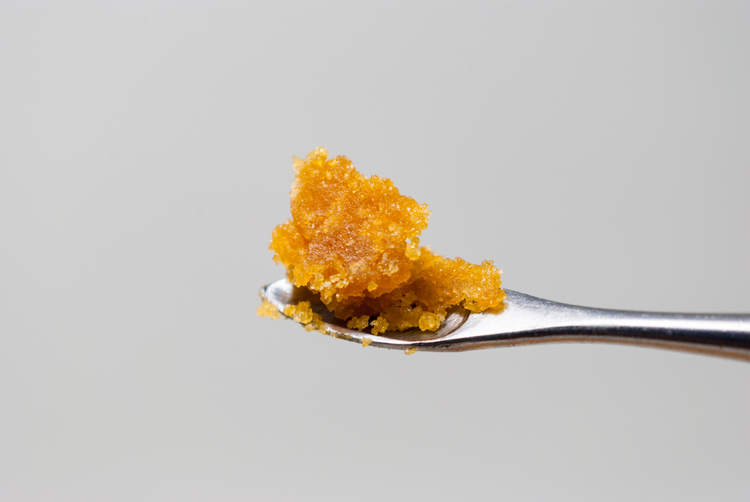
What is live resin extract?
The resin is extracted from live cannabis plants. It is made from plants that have not been dried, crushed, hardened, or subjected to any process that is “deadly” to the plant.
Cannabis plants can survive for several hours after separation from the roots, but they dry out after harvest. Live resin extracts are derived from fresh, live plants. They contain a high concentration of terpenes that retain the plant’s strong smell.
Traditional extracts from dried plants lose up to 95% of their terpene profiles even before the extraction process begins. This means that most of the original smell of marijuana doesn’t make it into the final extract.
Live resin extraction ensures the highest terpene content of all extraction techniques. These terpenes are important because they offer many inherent therapeutic benefits and give the extract its distinctive aroma.
Where do live resin extracts come from?
While no one knows exactly where or when resin extracts were invented, you can thank William “Kind Bill” Fenger for bringing them into the mainstream.
Kind Bill a.k.a. “The Godfather of Live Resin Extracts” has been making cannabis extracts since the 80’s. He first came up with the idea of using fresh cannabis plants in 2010 and has spent the last decade perfecting this art until he created the product we know today.
Extraction from a live cannabis plant was done by others – the usual method was to use freshly frozen flowers and extract using butane in an open system. This method works, but it is very dangerous because butane can ignite and explode during the process.
Besides, the yields were simply too low to be taken into account. A lot of marijuana is lost in the process, and that ultimately means losing money, so commercial enterprises have largely ignored the problem.
Kind Bill teamed up with Giddy Up—the founder of cannabis extraction company EmoTek—in 2013 and came up with a better way to commercialize resin extracts.
This process uses a device called OBE-Dos – it’s a closed system with ultra-cooled cannabis flowers and butane. These devices create ideal conditions for extracting resin from the live cannabis plant as a whole. This method is so effective that it has finally become profitable to commercially produce extracts from live resin.
Companies around the world are now purchasing their own OBE-Dos devices or equivalent systems to start profiting from this new form of cannabis concentrates.
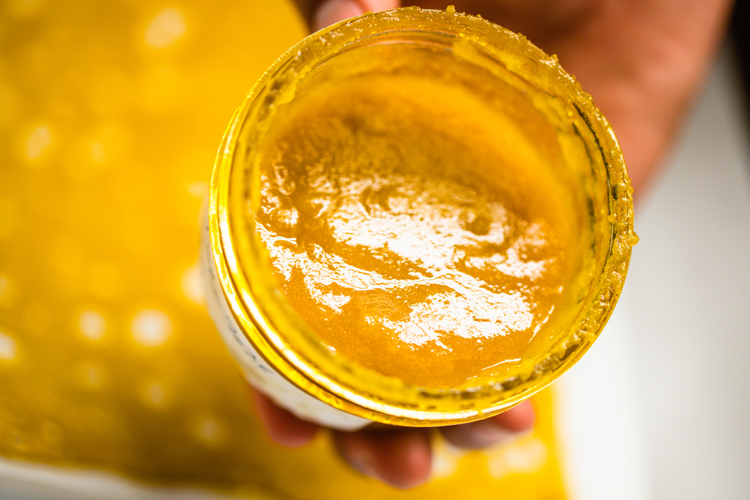
What do live resin extracts look like?
These concentrates look very similar to any other cannabis concentrate – the difference is in the smell and chemical profile. They often have a distinct golden color due to the influence of pigments from fresh plant resin before it has a chance to oxidize. Live resins also have a waxy, sometimes slippery consistency.
Live resin extracts can be found in the form of waxes, shatters, dabs, and pre-filled vaporizer pens and cartridges. One of the key differences between live extracts and traditional concentrates is the way they change over time.
While regular shatters and waxes retain their color and texture, live resin extracts can evolve over time – starting with a pleasant texture, then becoming cloudy, and eventually developing a more subtle texture. This change occurs as the terpenes evaporate, and the stability of the resin begins to break down.
Resin extracts can be used at all stages, but they are best consumed fresh. The shorter lifespan of live extracts is a side effect of the fact that they are high-quality fresh extracts.
Live Resin Extracts from Industrial Hemp
The initial interest in resin extracts came from recreational spaces of marijuana users, using high-THC strains. Nowadays, you can find live resin extracts made from high-contentand CBD hemp strains.
Technical plants produce terpenes just like any other. These terpenes have so much more to offer than just taste. In fact, many of them have their own therapeutic benefits.
We expect to see great development in the field of live cannabis resin extracts in the coming years as people become more aware of the benefits of terpenes.
What are the benefits of live resin extracts?
1. Live resin extracts have a higher terpene profile
Live resin extracts are particularly rich in terpenes compared to other concentrates.
This is because terpenes evaporate quickly after the plant has been harvested, dried, and processed. Only a fraction of the original terpene profile remains in the final product. Some experts assume that conventional resin extracts contain only about 5% of the original terpene profile. Live resin extracts contain up to 90% of the original terpene levels in the plant.
A key element in maintaining the terpene profile is the process that occurs at a lower temperature.
Terpenes are volatile compounds—meaning they’re small enough to evaporate at high temperatures. Even room temperature is enough to vaporize most terpenes – so true extraction from live resin requires cooling the plant and solvent to a very low temperature.
2. live resin extracts may contain higher concentrations of CBD and THC
A similar benefit of live resin extracts can be seen with cannabinoids. When a plant is harvested, these compounds immediately begin to break down and change as the plant begins to die. This also happens because of the heat.
One of the most important changes is the conversion of CBD and THC into a cannabinoid known as CBN (cannabinol).
CBN is a much stronger sedative than CBD and gives the final concentrate a stronger “couch potato” feeling. It also means less CBD in the final product than you might want.
3. Live resin extracts make it harder for companies to use bad marijuana
The use of live plants in the extraction process gives the final product an aromatic profile almost identical to that of fresh plants – making it easier to identify low-quality plant extracts from the outset.
If the manufacturer doesn’t use the best plants to make the extract, you can smell it.
This is not the case with isolates, where all other compounds have been removed from the extract. Without a certificate of analysis, it is almost impossible to say anything about the quality of the cannabis used to make the isolate.
The vast majority of CBD products on the market are made from low-quality plants and have been produced simply by turning them into isolate. The high-quality material is raw flowers, full-spectrum extracts and live resin extracts.
In addition, companies often add terpenes to their products to regain flavor and label them as broad-spectrum extracts. The problem is that these terpenes are often synthetic or derived from plants other than cannabis.
If you are buying a product made from a live resin extract, there is a much higher chance that you are buying a quality product.
How do live resin extracts compare to other types of products?
Most CBD products on the market are made using CBD isolate or broad-spectrum extract. They work well, but it is very difficult to determine the quality of these products just by taste or appearance. As such, it is necessary to carry out a laboratory test to separate the good from the bad.
Some companies produce full-spectrum extracts that retain part of the plant’s terpene profile. Full-spectrum extracts are typically made from dried plants and therefore do not possess a full terpene profile. They have a similar taste and aroma to a fresh plant, but they do not resemble what live resin offers. With this type of extract, it can be difficult to determine the quality of the source material.
Live resin extracts are the new “gold standard” for full-spectrum extracts. They capture the entire phytochemical profile of the plant — including cannabinoids, terpenes, and other phytochemicals. With these extracts, you can easily recognize the quality of the starting cannabis by the color, consistency, and smell of the extract.
Below is a brief description of each product type:
- Full-spectrum extracts
Right now, it’s the closest thing to resin extracts that we have available in the mainstream market. Full-spectrum extracts retain as much of the chemical profile in cannabis as possible.
The plants are first dried and subjected to a curing process before going through this process, so that a large amount of terpenes are no longer present at the time of extraction.
Full-spectrum extracts are used to produce every type of product imaginable. They can be found in the form of concentrates, such as shatters or dabs, or mixed with other compounds to form oils, lotions, gums, or ointments.
- CBD Isolates (Distillates)
It is by far the most common source of CBD on the market. They can be purchased as purified CBD crystals or combined with other ingredients to create all other CBD products.
The problem with isolates is that you have no idea what the original state of the cannabis used to make them was. Companies often sell the lowest quality leaves, cuttings, flowers, and even plant stems to extraction labs to create this extract. This is then sold to CBD companies around the world. They transform it into their products.
- Broad-spectrum extracts
Broad-spectrum extracts are a combination of both. They use CBD distillate or isolate and combine it with other cannabinoids and terpenes to make the product resemble a full-spectrum extract – with a few differences.
This has distinct advantages – for example, the ability to offer a product similar to full-spectrum products, while ensuring that these products do not contain the psychoactive (and illegal) cannabinoid, THC.
However, this form of extraction also has its drawbacks – many companies claim their products are “full-spectrum” but actually only use CBD isolates and a few added terpenes – often simple terpenes like limonene or beta-caryophyllene, which are either synthetic or derived from non-hemp plants.
This is misleading, as a valid full-spectrum extract has up to a dozen or more cannabinoids and several hundred different terpenes—a radical difference.
Comparison of resin extracts with other cannabis extraction techniques:
|
Extract Type |
Benefits |
Disadvantages |
|
Live Resin Extract |
– Contains the highest possible amount of terpenes – Incredibly strong flavor profile – The use of high-quality plants is impossible to imitate. |
– On average, more expensive than other types of extracts – Texture and flavor can spoil over time |
|
Full-spectrum extracts |
– Contain a more complete phytochemical profile than isolates – Offers part of the original flavor profile of the unprocessed plant – Relatively cheap production |
– The flavor profile and terpene profile of live resin extract is missing. – Can be masked by other terpenes to hide the use of low-quality plants |
|
Broad-spectrum extracts |
– It offers a cannabinoid profile similar to full-spectrum extracts, but does not guarantee zero THC content. – Typically less expensive than live resin extracts and full-spectrum extracts. |
– May contain synthetic terpenes and chemical additives – They are often sold using confusing terminology |
|
CBD isolates (distillates) |
– Offers a very cheap source of CBD or other specific cannabinoids – Better for use with other supplements or medications |
– Other phytochemicals that support the effects of CBD and other cannabinoids are lacking – Plants of inferior quality, moldy or contaminated are often used in production |
Why the future of CBD lies in live resin extracts
Most CBD products on the market are made from concentrates in one form or another, whether they are considered “full-spectrum” or “isolates”. Companies either create their own extracts or buy them from someone else. They then mix them with a carrier oil or other ingredients to create an ointment or food.
Over the past few years, live resin extracts have receded into the background. Most companies have simply ignored them due to the higher cost of production and shorter shelf life than other concentrates. But times are changing.
As more and more people become aware of the benefits of live extracts in terms of taste and overall quality, this form of extracts will gain an important place in the market.
The main advantage of live resin extraction is the very high terpene content and the ideal cannabinoid profile. Live resin extracts provide an overall better product, even when compared to full-spectrum extracts, which are now widely considered by consumers to be the best option.
More importantly, live resin extracts require manufacturers to use only high-quality hemp plants. You can’t produce resin extracts without a high-quality starting material – it’s simply not possible.
As time goes on and consumers become aware of the benefits of resin extracts over traditional extraction techniques, it can be assumed that the market for this product will grow dramatically.
The biggest area where this new form of extraction will go mainstream is in vapes and their cartridges. This is certainly an area that is worth keeping an eye on.
Autor: Matthias Roth
Photo: Shutterstock
“All information provided on this website, as well as information that is provided through this website, is for educational purposes only. None of the information presented herein is intended to be a substitute for medical diagnosis and such information should not be considered medical advice or recommended treatment. This website does not endorse, approve or defend the permitted or prohibited use of psychoactive or psychotropic substances, or the performance of other illegal activities. For more information, please see our Liability Statement.”
